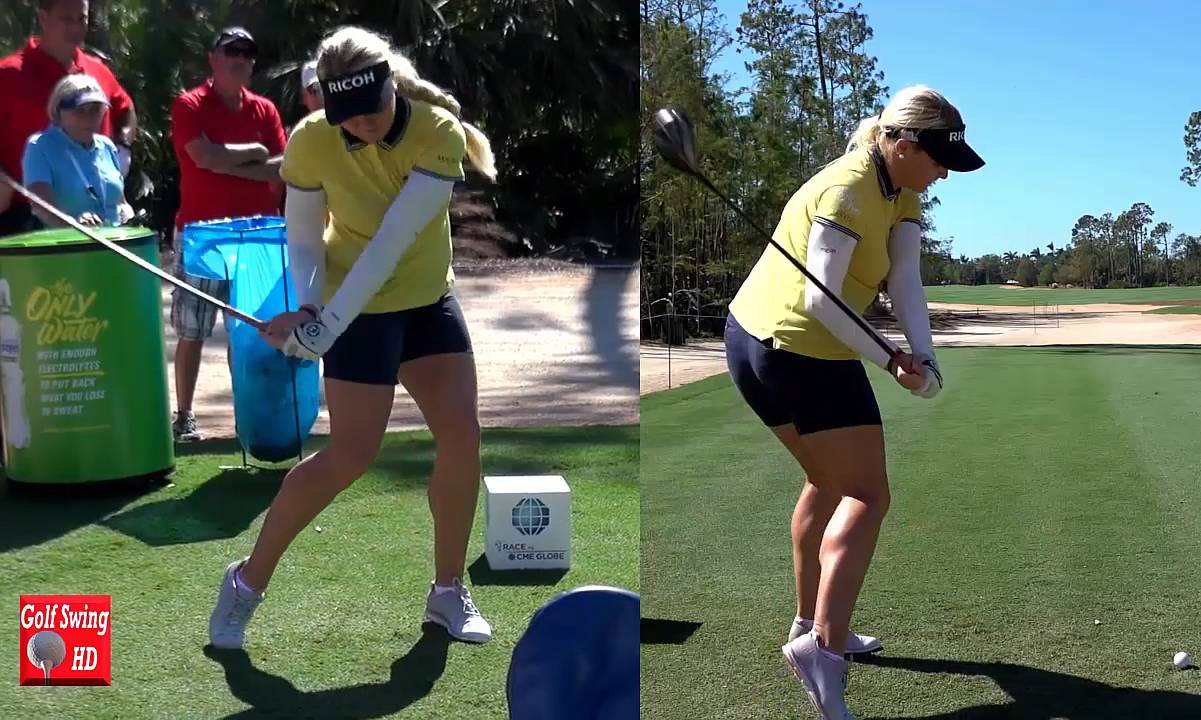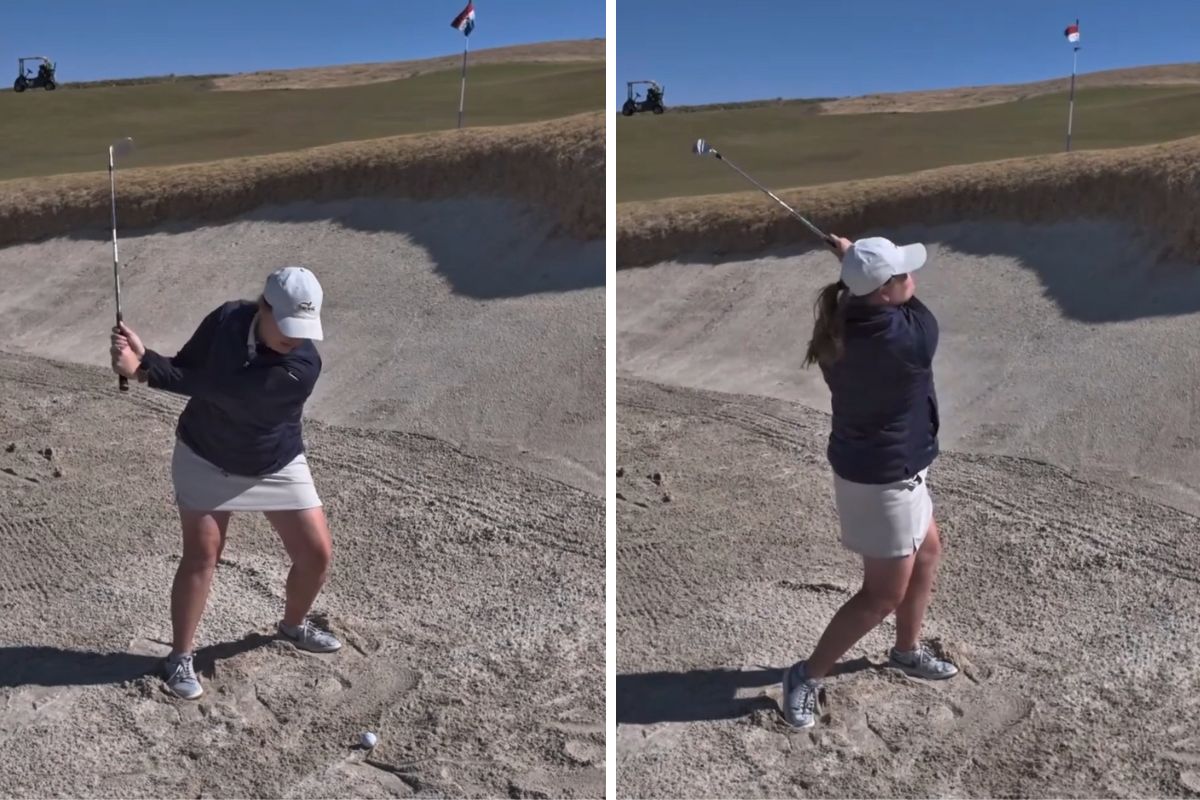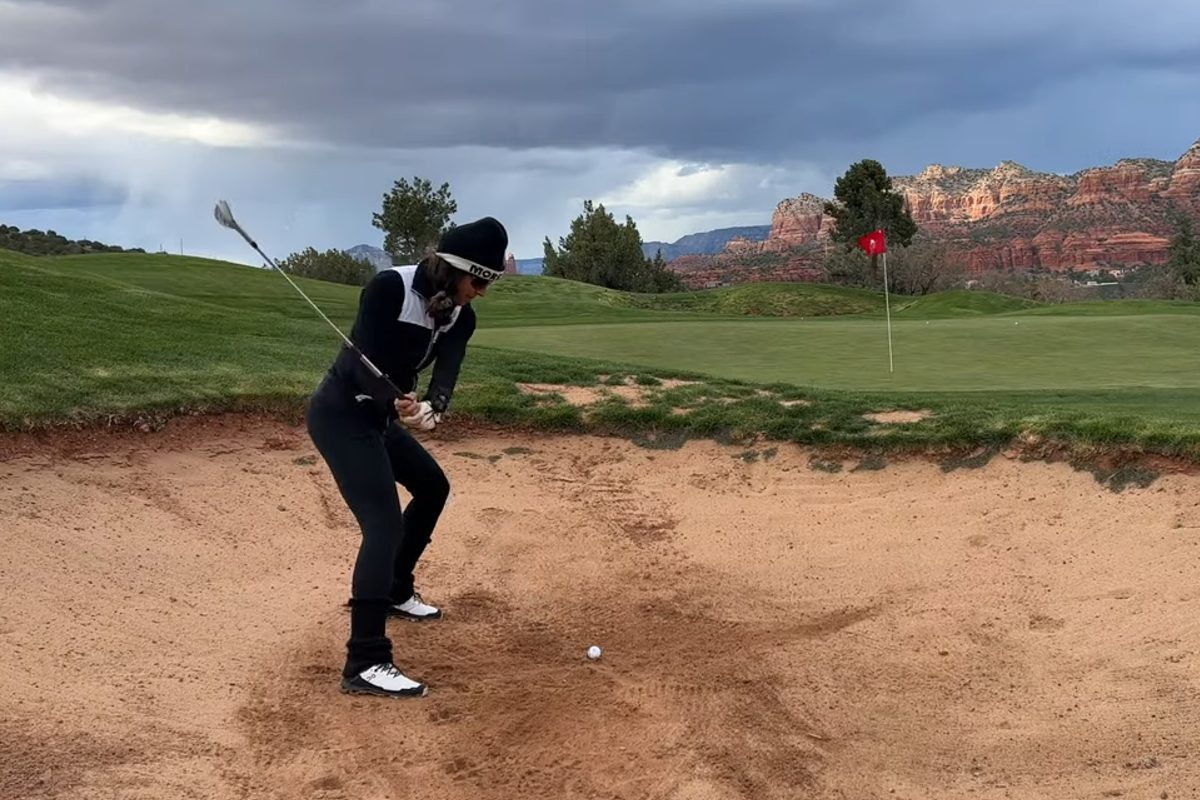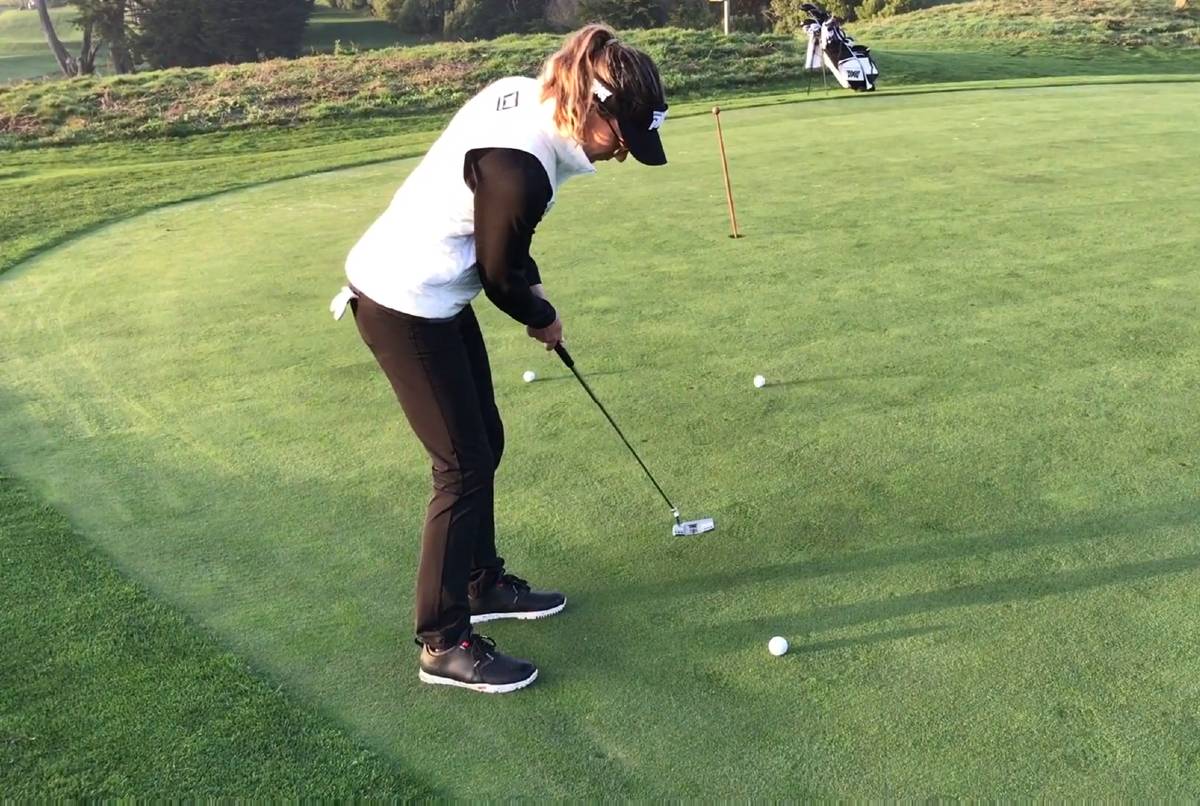Charley Hull, English Solheim Cup player and 2016 CME Group Tour Championship winner, is another great example to emulate while you are working on mastering the fundamentals. Swings like Charley’s are built to last and you can enjoy the sport deep into your golden years if you get the fundamentals as right as Charley Hull does.

Setup
Face-On:
Charley has a fundamentally sound driver set up in this video. Ball position is forward, inside her lead foot. Hands are positioned just on the inside of her forward thigh.
Down The Line:
Her knees have the proper flex, her waist has the proper bend and her arms are hanging down. (So many times, an amateur has too much knee bend, not nearly enough waist bend and their arms reach forward, not down.)
Takeaway
Down The Line:
The club face is just outside the hands at the point in the takeaway, where the shaft is parallel to the ground. This is a sign of width! A big swing arc! (Many amateurs have the club face “inside” the hands at this checkpoint and are reducing their swing width.)
Face On:
She has a nice “triangle” shape with extended arms during her takeaway. Her shoulders have only just begun to turn as she keeps the club in front of her. (Amateurs struggle with this position and the clubface finds itself behind them, not in front of them, even this early in the swing.)
High Definition Video of Charley Hull’s Swing

At The Top
Face On:
Her back is turned to the target. (I often tell my students that they have a number on their back and everyone at the target needs to see what number you are wearing). The majority of her weight has now been distributed by the turning of her back to the braced and flexed rear knee and the inside of the right foot. Most weight is on the inside of the right heel at the top of the swing. This is the “load” we all strive for! Turning that upper body and disbursing weight onto that resisting lower body. Torque City! (You want to keep the inside of the rear foot “pinned” down. I have my students “hold down that newspaper” on the inside of their rear foot during the backswing, or else it will blow away.). The club shaft is parallel to the ground, indicating a full wrist cock to go along with that awesome turn!
Down The Line:
Her left arm is extended and pulled back “behind” her head. (Many amateurs block their face from view at the top of the backswing and do not have nearly enough “pull back”.) The club shaft is pointed parallel left of the target, fully loaded with wrist cock. She kept her posture: knees flexed and braced and her waist bend is still easy to see. (Amateurs struggle with keeping this rear knee flexed and braced. You do not want your rear knee to stand up.)
Halfway down – 17 seconds
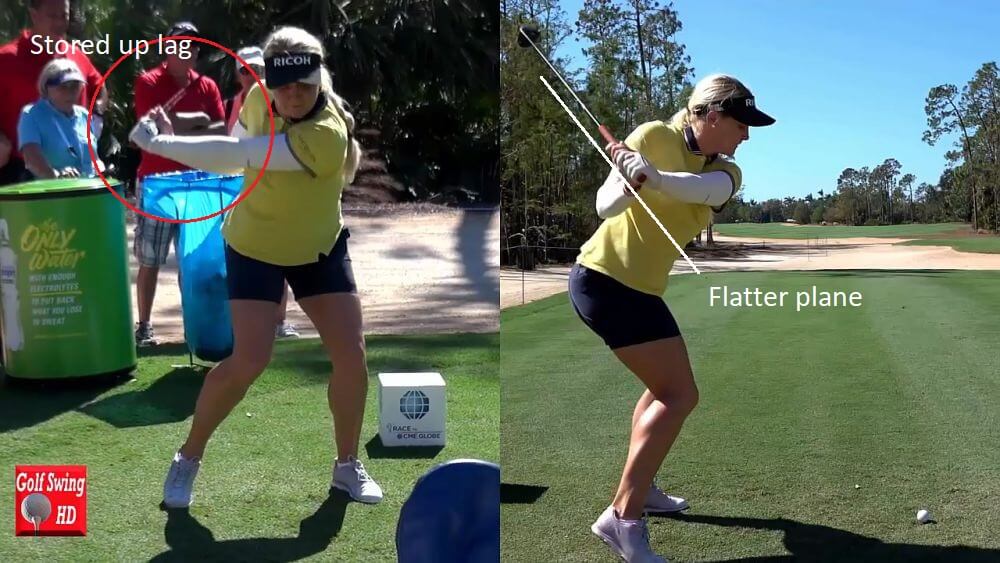
Face On:
See how she nudges forward, closer to the white tee box marker before she rotated around. (This is a lateral move that many amateurs need to work on to start their downswings). This is the “first move down” in the sequence of the swing. A bump forward, then around!
When her left arm is parallel to the ground, the club shaft is still pointed behind her at a 45-degree angle. This is called “stored up lag”. This will give her tremendous clubhead speed at the impact position! (Many amateurs have the shaft pointed straight up, or even toward 11 o’clock at this point when the left arm is parallel to the ground in the downswing. So, they had an “early” releasing of the wrists and will not have much “stored up lag” for the impact position).
Down the Line:
The club shaft is lined up through her lower left bicep nicely in an 11 o’clock – 5 o’clock position. It is on a flatter plane than the shaft was during the backswing. (Most amateurs do just the opposite. They take the club shaft back too flat and inside during the backswing and then make a downswing on a steeper “outside-in” plane. They need to make a slight “reverse loop”, not a forward loop that could get them cutting across the ball) which is usually accompanied by an open clubface for a classic slice)
Finish-Follow Through – 25 seconds
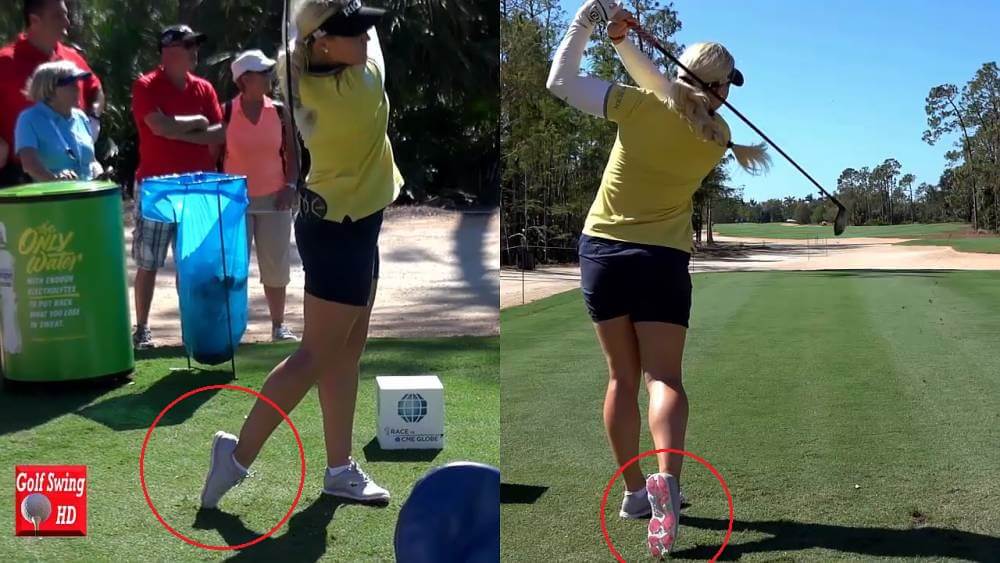
Face On:
Weight is on her front foot with her rear foot all the way up. (If the rear foot is all the way up, you must be on the front foot!) We see her right side as she has released her body in a fantastic rotational move to the left. Her right shoulder is now closest to the target, then her head and then her left shoulder in a line. The club shaft is released behind her.
“Show the person behind you what size shoe you wear!”
Pete Kelbel
Down The Line:
The club shaft is released 11 o’clock – 4:00 o’clock going in a line through the back of her head. Everyone can see the entire rear foot. (Amateurs need to work on giving up ALL the weight on the rear foot.) I always say: “Show the person behind you what size shoe you wear!” This way, you have no more weight to transfer and have released all your weight into the shot.
Charley Hull is one powerful player who is fundamentally sound from set up through a balanced finish. Try to copy her swing each step of the way. If your fundamentals are sound, it’s hard not to get better by imitating Charley!
Pete

